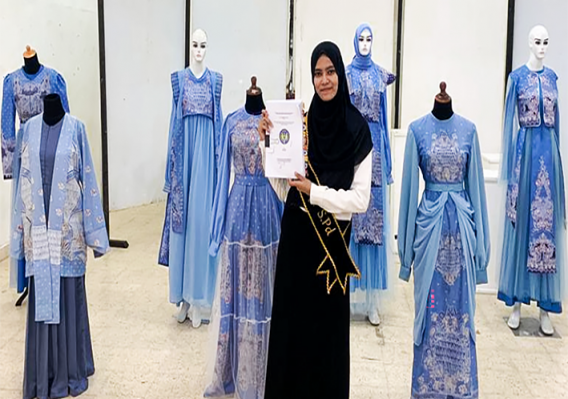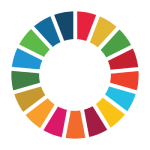Bungong Jeumpa as inspiration for Batik Dress

Bungong Jeumpa is one of the Acehnese folk songs famous throughout Indonesia. When hearing Bungong Jeumpa, everyone will remember Aceh. Bungong jeumpa is a flower that is the pride of the people of Aceh. The song Bungong Jeumpa has a deep meaning; the song Bungong Jeumpa describes the spirit and beauty of the Land of Aceh, symbolized by a typical royal flower. Bungong jeumpa is known by people outside Aceh as cempaka flower. In the hands of UNY students, Bungong Jeumpa was transformed into a work of art in a batik dress. Intan Rafiqa processed Bungong Jeumpa as a dress decoration motif to get innovative forms in developing Bungong Jeumpa motifs into batik crafts.
According to Intan, Bungong Jeumpa for Acehnese culture symbolizes beauty. However, applying the Bungong Jeumpa motif has been limited to carvings and buildings. "The ability to process batik crafts in Aceh is still lacking and there is no development of the Bungong Jeumpa motif in Aceh. Therefore, I want to try to create Bungong Jeumpa as a creative batik dress decoration motif so that later the resulting work can be accepted in the community and become one of the craft works that can please everyone who sees it, "said Intan.
In creating this work, Intan took the white and yellow types of Bungong Jeumpa, where white and yellow Bungong Jeumpa are often found in the house's yard and are most commonly found in Aceh. Then developed by looking for inspiration from the types of Bungong Jeumpa that bloom and bud, then stylized or changed with various styles and made into various new forms that are decorative, but the characteristics of the shape are still visible.
Intan chose to use Japanese cotton fabric as the main material in making batik dresses. "Because in Aceh itself, the prima/primisima fabric commonly used for batik is still very difficult to obtain, I decided to use Japanese cotton fabric which is relatively easier to find in fabric stores. This will make it easier for craftsmen who want to work using the Bungong Jeumpa motif, but it is difficult to get prima/primisima fabric in the area," said Intan.
The innovation of 'Bungong Jeumpa as a Batik Dress Decorating Motif' went through three stages of the making process: exploration, design, and implementation. The exploration stage is carried out by exploring all sources of ideas, collecting information, and processing data which will later become the basis for design. The design stage is done by making alternative, selected, and working drawings. The implementation stage is done by making work from preparing tools and materials and finishing. After conducting a color test with Japanese cotton fabric, the color applied to Japanese cotton fabric creates a softer color because the fibers in Japanese cotton fabric differ from the prima/primisima fabric used in general. Today's teenagers are more interested in colors that look softer, because the target for creating this batik dress is aimed for teenagers and adults.
This dress work uses light blue's indigo sol color for the fabric's basic coloring, so the color looks soft. In some parts of the leaves and stems, use indigo sol coloring in gray. Still, the application on Japanese cotton fabric turns the gray color into a darker blue color than the basic light blue coloring, thus creating a new aesthetic color. (Writer: Dedy, Editor: Sudaryono, Tj.Lak)






